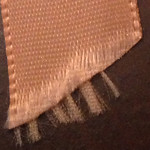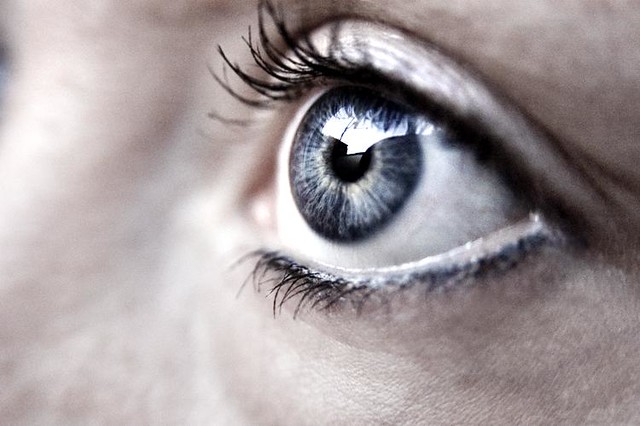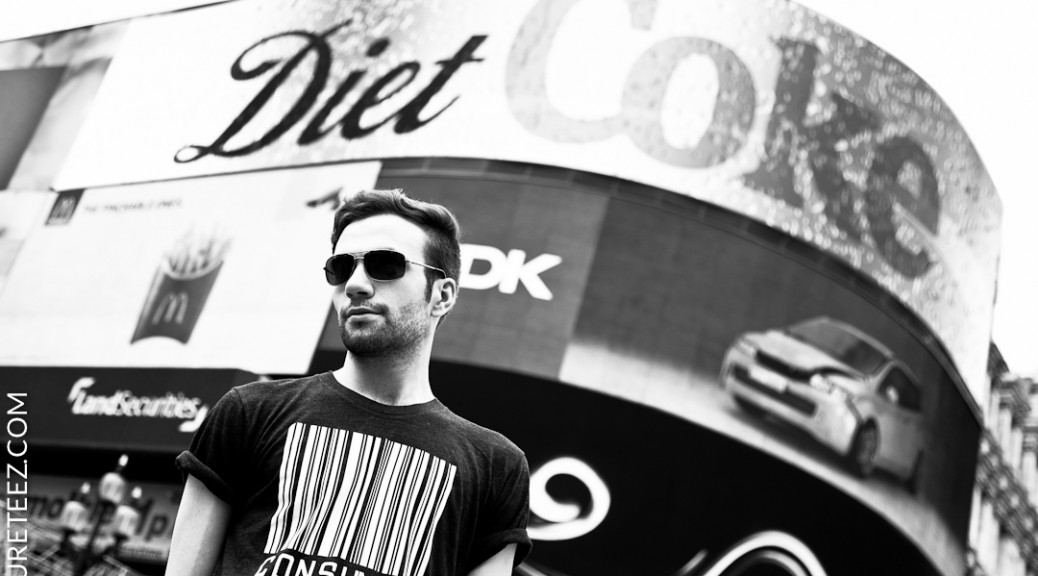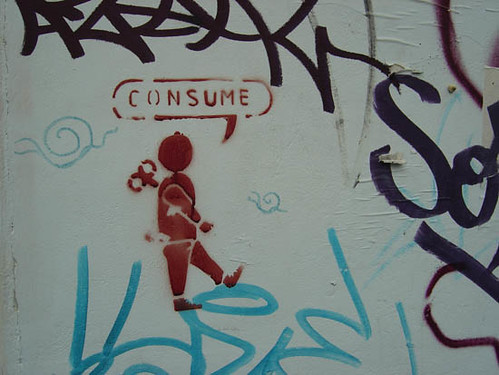According to Jean Baudrillard, sociologist and philosopher, there are “three orders of simulacra” in which we can divide the course of history. In the first order, called “the counterfeit” or the early capitalism, people desired things because of their socially symbolic value. In other words, people thought in terms of signs: the different classes were recognizable through distinct objects, such as a particular attire, beautiful houses, expensive accessories, etc. In the second order, called “the series” or industrial capitalism, the large-scale factory production instilled a desire for things that was based on their sign value, namely the idea that people define their identity through the things they possess. People bought things that were not directly related to the idea of survival, but rather tied to the culture in which they lived. Finally in the third order, called “the hyperreal” or postmodernism (right after World War II), commodities became a language; the signifier became digital, a machine, DNA. Society began programming people to acquire things not because they operate as signs, but because they work as human language: the rapid technological development created an environment in which the media conditioned us to buy unnecessary objects. I believe that we are living in this kind of society nowadays. Indeed, we are conditioned to want something and, once we have satisfied this initial desire, we are programmed to immediately desire something else. It is a cyclical process including the following stages: a strong desire, the appropriation of the object and a temporary sense of satisfaction, and finally a new desire for something that replaces the previous object.
For example, for trivial it might be, the invention of the mobile phone is a revolutionary step in the postmodern technological wave that changed the way in which people live all over the world, affecting social customs and cultural conventions, as well as economic and political practices. At the same time, however, it has opened the door to a mechanism of alienation and self-destruction that probably was not foreseen when the first models were introduced to the market. Indeed, we are obsessed with mobile! Although this technology is supposed to bring people together through a global net of communication, it often drives them apart as norms such as etiquette and genuine conversation are ignored in favor of a more digital approach to social conventions. That is why recently it has become a fashion to ask the first person who reaches for his or her phone during a meal to pay for the bill.

http://www.como.com/blog/2014/08/usual-guide-mobile-etiquette/
In my experience, buying something is always tempting, and this temptation takes the form of clothes for me. The obvious benefits is that I can enjoy and display something new and beautiful, receive compliments from other people, have a confirmation of my sense of fashion and enhance my self-esteem. The equally obvious costs literally weigh on my wallet and reflect in a wardrobe that after a certain period of time I just want to replace, and figuratively traduce into a constant stress for the money I dissipate and the urgency of finding new storage in an already cluttered closet. There is a real disease termed “oniomania” for those who have the uncontrollable and compulsive desire to shop, a clinical addiction that might have disastrous results in one’s private life.
In an article entitled “Addition to Shopping Becomes a Serious Mental Disorder,” psychologist Nadezhda Yugrina claims that “shopping addiction resembles drug, gambling or alcoholic addiction. One should look for its reasons in the childhood of every particular individual. As a rule, such people suffered from the shortage of human care and tenderness when children. A person can grow in a normal family and receive good education, but experience a strong need in love. When such people grow up, they can find attention in various stores.” The first symptoms of shopping disorder were identified in the 1990s. This mental disorder is common mostly with women. “Researchers found out that about twenty percent of German women acknowledge their insuperable desire to buy something all the time. The addiction has conquered 40 percent of American women, whereas 52 percent of British females said they found shopping a lot more enjoyable than sex.”
In this case, people use things as a compensation and a form of extended self. To the disease of oniomania, it has been dedicated a movie called “I Love Shopping” in which the female protagonist has the uncontainable urge to buy clothes. Despite the happy ending, the movie clearly shows the costs of wanting things. The same addiction can be found in other female figures on the screen: Rachel Green from “Friends, ”Carrie Bradshaw from “Sex and the City,” Caroline Channing from “2 Broke Girls,” and so on.
In conclusion, there are many benefits and costs for wanting things. Although the reason why people desire material things changed in the course of history, there is still a strong connection between humans and the artifacts they produce, and it is a psychological, cultural, and social connection in nature. However, I believe that the costs of human desire are often superior to the benefits as we sometimes fall in a vicious circle in which we constantly desire things that we don’t need without ever reaching a complete and enduring satisfaction.
 Four tiny pin holes are visible on the fabric, two of which appear approximately 6 cm from each end indicating that these two tiny holes were created by the same pin. When metamorphosing the object to have the two pin holes from each end align, the fabric acquires varied symbolic shapes to which depends on the consumer’s purpose. The shape is now similar to that of the Ichthys yet without a profound loop and more fabric dangling below the pin. The position of the pinholes suggest that, unlike that of the Ichthys, this object is to be represented vertically.
Four tiny pin holes are visible on the fabric, two of which appear approximately 6 cm from each end indicating that these two tiny holes were created by the same pin. When metamorphosing the object to have the two pin holes from each end align, the fabric acquires varied symbolic shapes to which depends on the consumer’s purpose. The shape is now similar to that of the Ichthys yet without a profound loop and more fabric dangling below the pin. The position of the pinholes suggest that, unlike that of the Ichthys, this object is to be represented vertically.










